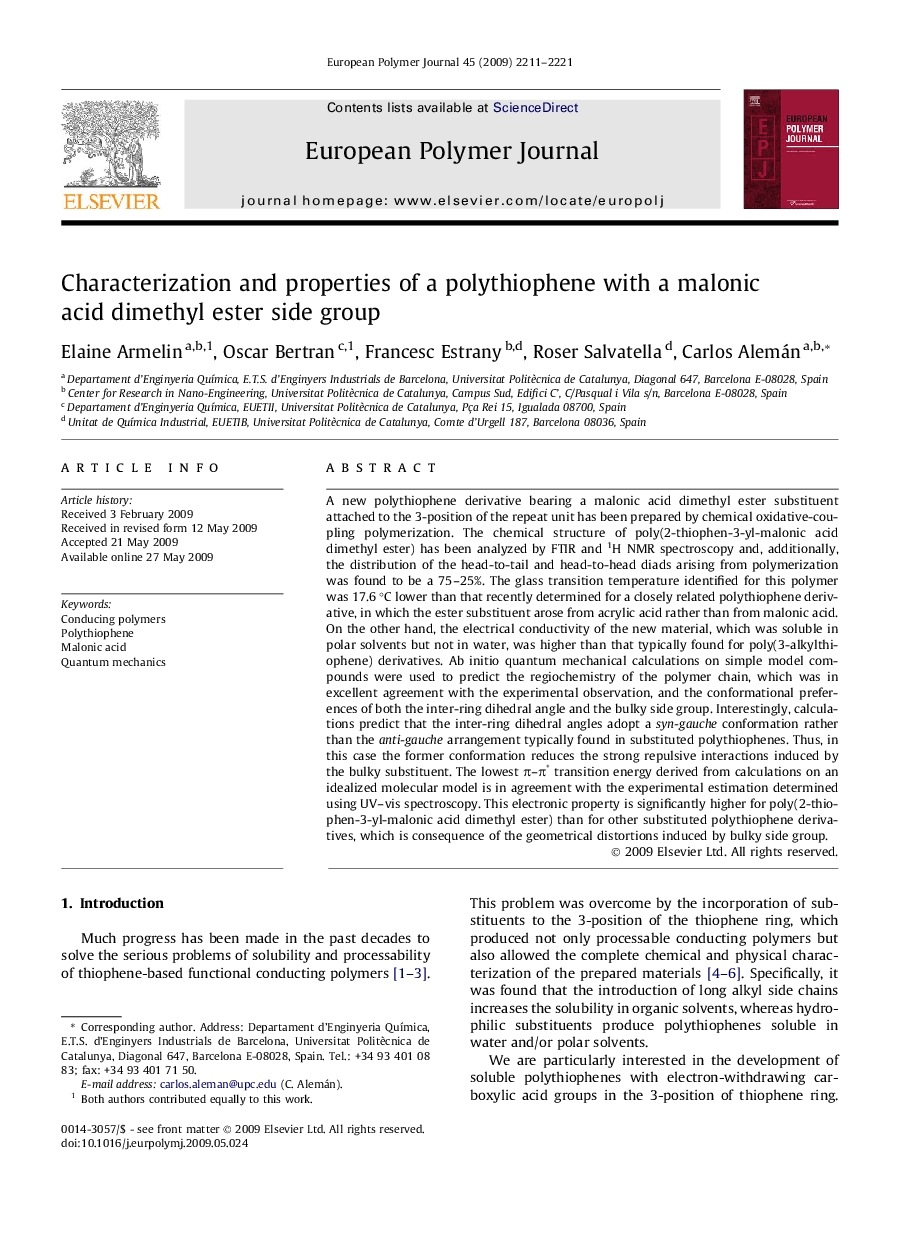| Article ID | Journal | Published Year | Pages | File Type |
|---|---|---|---|---|
| 1400779 | European Polymer Journal | 2009 | 11 Pages |
A new polythiophene derivative bearing a malonic acid dimethyl ester substituent attached to the 3-position of the repeat unit has been prepared by chemical oxidative-coupling polymerization. The chemical structure of poly(2-thiophen-3-yl-malonic acid dimethyl ester) has been analyzed by FTIR and 1H NMR spectroscopy and, additionally, the distribution of the head-to-tail and head-to-head diads arising from polymerization was found to be a 75–25%. The glass transition temperature identified for this polymer was 17.6 °C lower than that recently determined for a closely related polythiophene derivative, in which the ester substituent arose from acrylic acid rather than from malonic acid. On the other hand, the electrical conductivity of the new material, which was soluble in polar solvents but not in water, was higher than that typically found for poly(3-alkylthiophene) derivatives. Ab initio quantum mechanical calculations on simple model compounds were used to predict the regiochemistry of the polymer chain, which was in excellent agreement with the experimental observation, and the conformational preferences of both the inter-ring dihedral angle and the bulky side group. Interestingly, calculations predict that the inter-ring dihedral angles adopt a syn-gauche conformation rather than the anti-gauche arrangement typically found in substituted polythiophenes. Thus, in this case the former conformation reduces the strong repulsive interactions induced by the bulky substituent. The lowest π–π∗ transition energy derived from calculations on an idealized molecular model is in agreement with the experimental estimation determined using UV–vis spectroscopy. This electronic property is significantly higher for poly(2-thiophen-3-yl-malonic acid dimethyl ester) than for other substituted polythiophene derivatives, which is consequence of the geometrical distortions induced by bulky side group.
Graphical abstractFigure optionsDownload full-size imageDownload as PowerPoint slide
